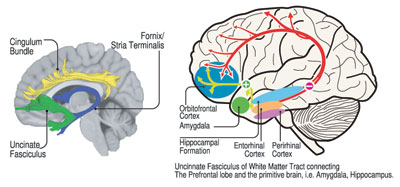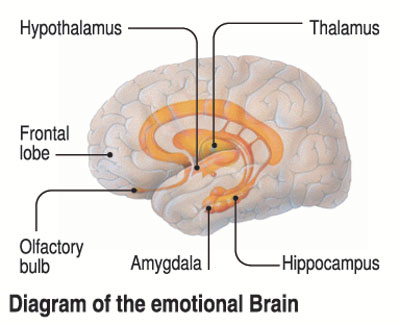Sunday Times 2
Sense perception in Buddhist philosophy and neuroscience
View(s):By Dr Channa Ratnatunga
Sense-awareness – Vedanakhandha
Neuroscience has shown that individual sense-reception (including that of the mind) triggers, by ‘illumination’, the respective neuronal network of the hind-brain and the cerebral cortex responsible for sense-specific reception. This is done by the release of specified neurotransmitters.
The thalamus (See diagram) in the primitive basal brain is the relay center for all the senses (except smell) and processes the information for distribution to the appropriate cortical areas of the brain. No two sense-triggers and their neuronal response can occur together, even if their reception is at the related sense organs, such as hearing and seeing a band at play.
These are compared, metaphorically, to a stone dropped into a tranquil pond (Bhavanga – an ever-flowing life-continuum) leading to ripples described as vibrations, of the respective sensation (Bhavanga-calana) and which abruptly arrests (Bhavanga-upaccheda), but comes to its original quiescent state (Bhavanga-Uppada) before the next sense trigger comes. This act takes place in Nano-seconds if not faster. This is an important reality in the Buddhist philosophy of sense reception, as it includes the arising of that sense consciousness – vinnana, leading to awareness or contact – phassa of the combined stimulus- or trigger. This is Vedanakhandha.
Perception – Sannakhandha
The ‘Being’ (Panchaskhandha) is the ‘interpreter’ of the combined sense stimulus. This is the act of ‘Perception – Sannakhandha’. That these sense-triggers activate the brain’s neuronal networks by investigating the input, with past experience. Depending on the nature of the combined sense stimulus, it could evoke a neutral, pleasurable or non-pleasurable feeling. This occurs at extreme speeds of neuronal transmission and is reflected in the concept of ‘thought moments’ 1-8, as described in the Abhidhamma.
Response to contact could be variable but, extremely rapid and leads to thought moments 9-15. The response is governed by the state of mind – cetana Sankharakhandha, of the ‘self’ at the moment. The ‘self’ is an ever-evolving experience induced, constructed by the neuroplasticity of the brain focused on its basic need to secure survival and procreative rights of the ‘Being’.
Neuronal backgrounds to the response Sankharakhandha are protean. The primitive man or an uneducated ‘being’ would respond with his basal instinctual survival reflexes arising in the basal brain, (ie the hypothalamus-pituitary-adrenal axis also called the Reptilian brain). The fight or flight response unmasking Gathi, which are, it is claimed, pre-dispositions, conditioned by Kamma of previous lives and life experiences in this life so far.
As a social species, humans have learnt to auto-regulate their primal instincts (such as the Freudian concept of Id) ingrained, structurally and functionally, to gain acceptance while living in the herd. Hence there occurs reciprocal facilitation by neuroplasticity of the neuronal tracts in the brain. They undergo changes that are conducive to such social acceptance within the herd. A process learnt in the years growing up, which results in neuroplastic changes, between the pre-fronto-medial cortex of the brain and the Amygdala (locus of emotion) of the pre-mammalian brain (emotional brain) through a connection referred as the Uncinnate Fasciculus of the brain. (See diagram.)
The auto-regulatory tracts
As a person gets more educated, the perceptive memories he relates to before making a decision expand; begins to lose tribalism, and adopts a more global attitude, hence bringing forth ‘morally wise’ decisions. These paths become ingrained by auto-regulation in the dorsolateral prefrontal cortex of the brain by neuroplasticity with time. The Freudian Ego, however, remains indulging in mental fabrications such as self-ranking with peers, imaginings – mannana like; clinging – tanha, conceit – manas and wrong views – meicha ditti. These ruminations – papanya of self-referenced thinking are thoughts arising in the Default Mode Network of the brain.
Contemplating the self; the underlying need for its arising i.e. for survival, its origins in neuro-plasticity and hence its impermanence, its role in creating Kamma, by Vipassana Bhavana will go a long way in eradicating this personality belief, i.e. of a Self. This leads to becoming aware of the reality of Anatta.
The Arahat mind has got over all these Kamma-generating fetters – kilesas by Vipassana meditation, though yet living among the herd. Not reacting to sense triggers, always living in the present moment, he/she does not create Kamma. The Arahat delinks the ever-present, ever-active Wheel of life – Paticca Samuppada, attenuating the Default Mode Network of the brain, hence rebirth.


